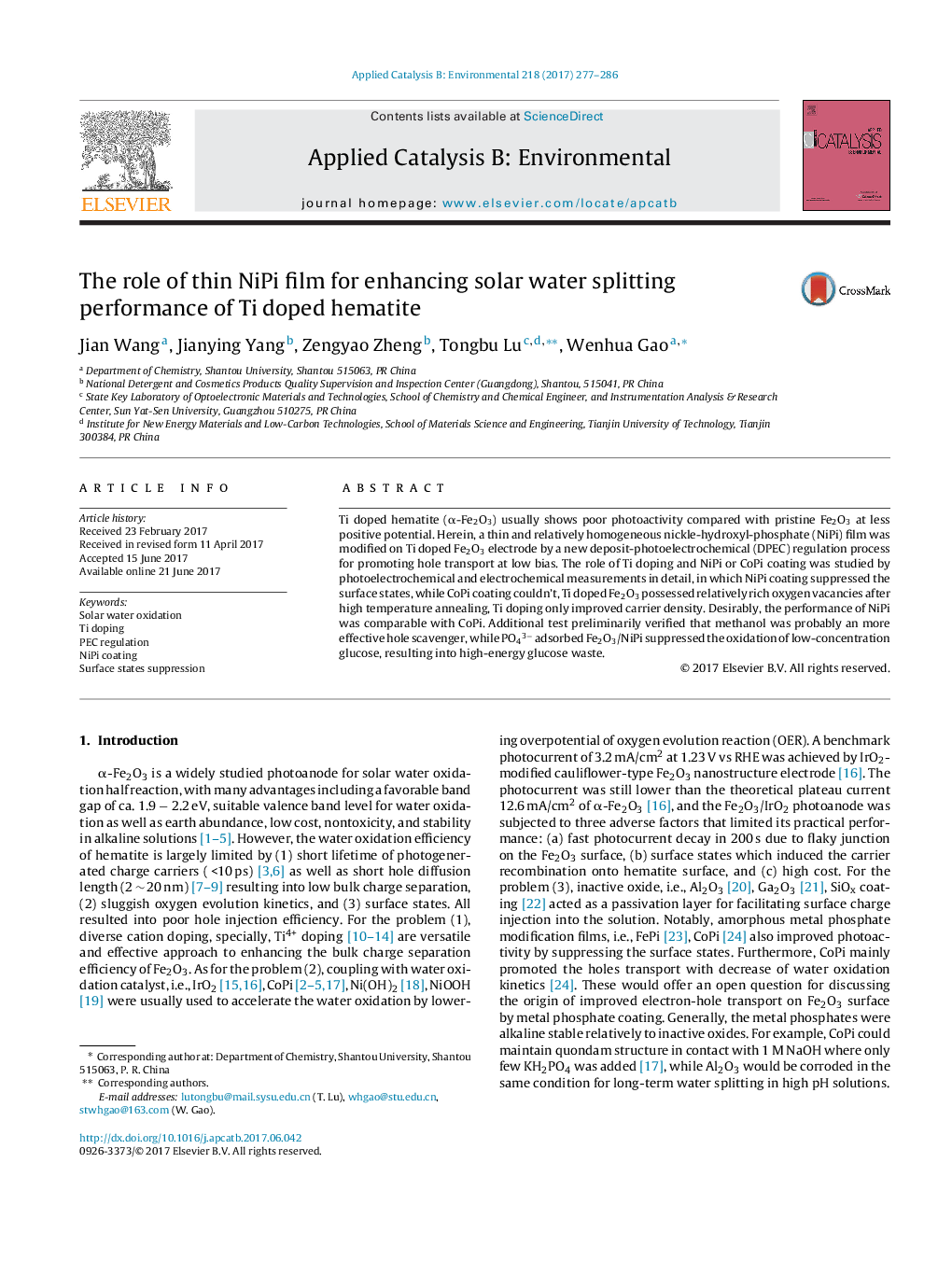| Article ID | Journal | Published Year | Pages | File Type |
|---|---|---|---|---|
| 6453739 | Applied Catalysis B: Environmental | 2017 | 10 Pages |
â¢Formation of NiPi on hematite by a facile deposit-photoelectrochemical (DPEC).â¢regulation process.â¢Ti doped Fe2O3 possessed relatively rich oxygen vacancies after high temperature annealing, accountable for low photoactivity at low bias.â¢NiPi coating suppressed the surface states for improving the photoactivity at low bias.â¢The PEC property of NiPi was comparable with CoPi, CoPi coating couldn't suppress the surface states.
Ti doped hematite (α-Fe2O3) usually shows poor photoactivity compared with pristine Fe2O3 at less positive potential. Herein, a thin and relatively homogeneous nickle-hydroxyl-phosphate (NiPi) film was modified on Ti doped Fe2O3 electrode by a new deposit-photoelectrochemical (DPEC) regulation process for promoting hole transport at low bias. The role of Ti doping and NiPi or CoPi coating was studied by photoelectrochemical and electrochemical measurements in detail, in which NiPi coating suppressed the surface states, while CoPi coating couldn't, Ti doped Fe2O3 possessed relatively rich oxygen vacancies after high temperature annealing, Ti doping only improved carrier density. Desirably, the performance of NiPi was comparable with CoPi. Additional test preliminarily verified that methanol was probably an more effective hole scavenger, while PO43â adsorbed Fe2O3/NiPi suppressed the oxidation of low-concentration glucose, resulting into high-energy glucose waste.
Graphical abstractDownload high-res image (188KB)Download full-size image
